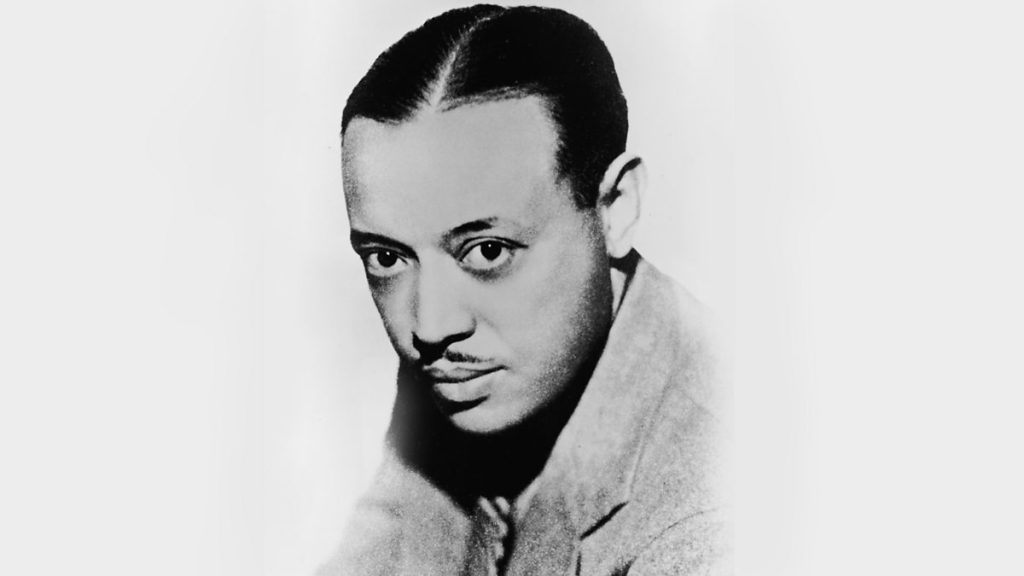William Grant Still

About the Music
Among William Grant Still’s many contributions to American classical music is Can’t You Line ‘Em, a lively tune inspired by a blues folk melody, Linin’ Track, by American musician Lead Belly (Huddie William Ledbetter). Can’t You Line ‘Em captures the rhythm and sounds of railroad construction crews lining up tracks. The original folk lyrics depict the back-breaking labor forced upon African American prisoners working on railroad chain gangs in the early 20th century:
Oh boys, is you right?
Done got right!
All I hate ’bout linin’ track
These ol’ bars ’bout to break my back
Oh boys, can’t you line ’em, Jack-a Jack-a
Oh boys, can’t you line ’em, Jack-a Jack-a
Oh boys, can’t you line ’em, Jack-a Jack-a
See Eloise go linin’ track
Moses stood on the Red Sea shore
Smotin’ that water with a two-by-four
If I could I surely would
Stand on the rock where Moses stood
Mary an’ the baby lyin’ in the shade
Thinkin’ on the money I ain’t made
About William Grant Still
William Grant Still was born in Woodville, Mississippi, to William Grant (1871 – 1895) and Carrie Lena Fambro Still (1872 – 1927). His mother relocated to Little Rock, Arkansas, to live with his grandmother after his father died when Still was only an infant. Still’s exposure to music began early when his grandmother sang spirituals as she worked around the house. His mother eventually remarried, and his stepfather, Charles Benjamin Shepperson, further cultivated his interest in music by taking young Still to operettas, orchestra concerts, and other music shows. Together, they listened to recordings of classical music, and so began Still’s deep appreciation for both old and new music and a range of sounds and styles including folk, spiritual, and classical. He began taking violin lessons at age 15, and later taught himself how to play other instruments, including the viola, cello, double bass, clarinet, oboe, and saxophone.
Still’s mother had hoped he would become a doctor, and he left Arkansas to pursue a pre-medical degree at Wilberforce University in Ohio. He left Wilberforce just months before graduating, turning his attention to music. He attended Oberlin Conservatory of Music where he studied composition. He later studied privately under the French composer Edgard Varèse, during the peak of his avant-garde period, and the American composer George Whitefield Chadwick at the New England Conservatory of Music in Boston.
Known as the Dean of African American composers, Still wrote operas, ballets, symphonies, and other works; he is best known for his Afro-American Symphony (1931). He was inducted into the American Classical Music Hall of Fame in 1999. In addition to his classical music compositions, he was an arranger for blues musician W. C. Handy and he played in the Harlem Symphony with jazz musicians Fletcher Henderson and James P. Johnson. Additionally, he was appointed music director of the Black Swan jazz label.
Still was honored in 1995 in a centennial celebration of his life and work, when then President Clinton said of him:
Music has always been a powerful, unifying force in our world, bringing people together across lines of ethnicity and geography. William Grant Still understood this, and throughout his long, rich career, he created works of such beauty and passion that they pierced the artificial barriers of race, nationality, and time. Today, one hundred years after his birth, his skilled compositions in chamber music, opera, ballet, symphony, and so many other forms of classical music continue to enrich our culture, and he remains a source of inspiration for musicians and music lovers around the globe.In Still’s own words, he hoped “that my music may serve a purpose larger than mere music. If it will help in some way to bring about better interracial understanding in America and in other countries, then I will feel that the work is justified.” –J.Reid

Published by